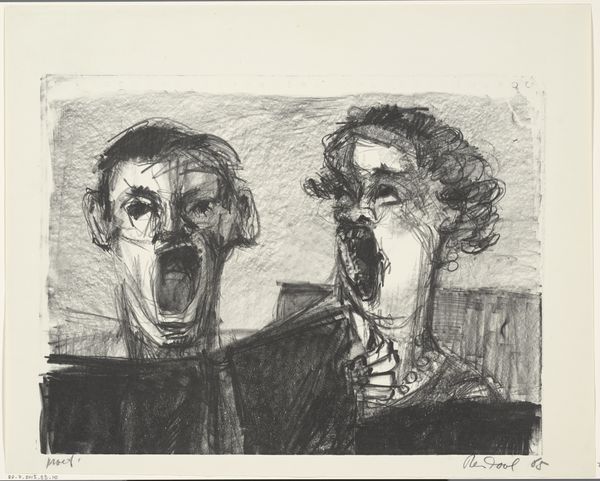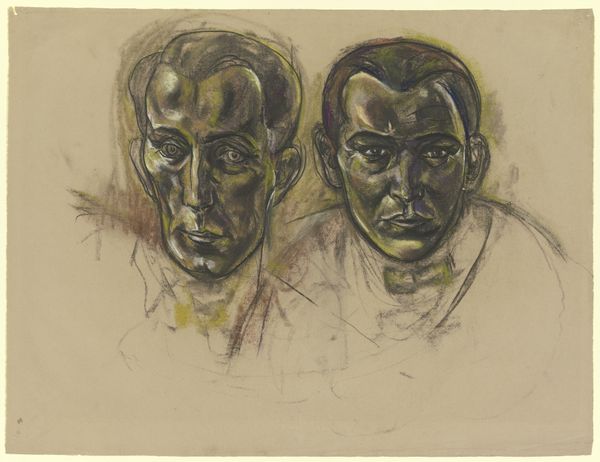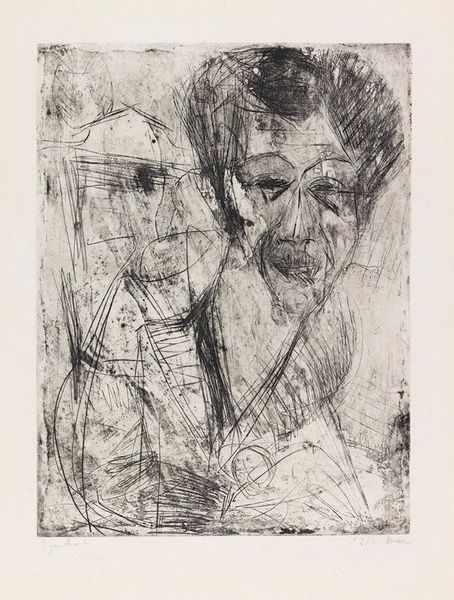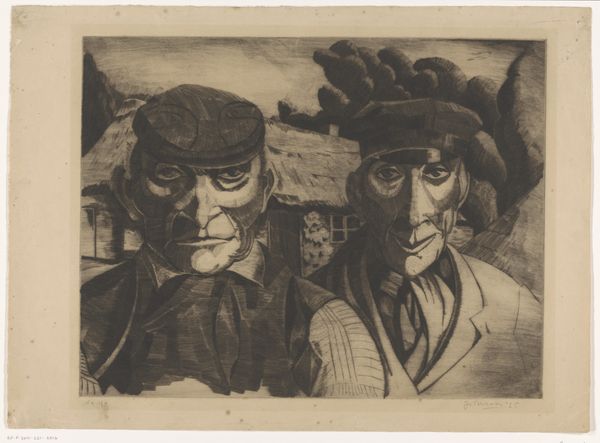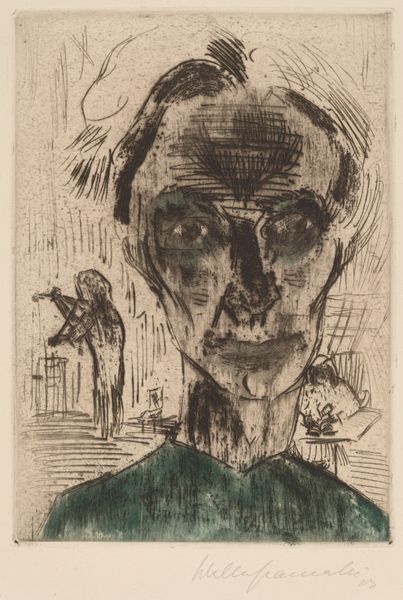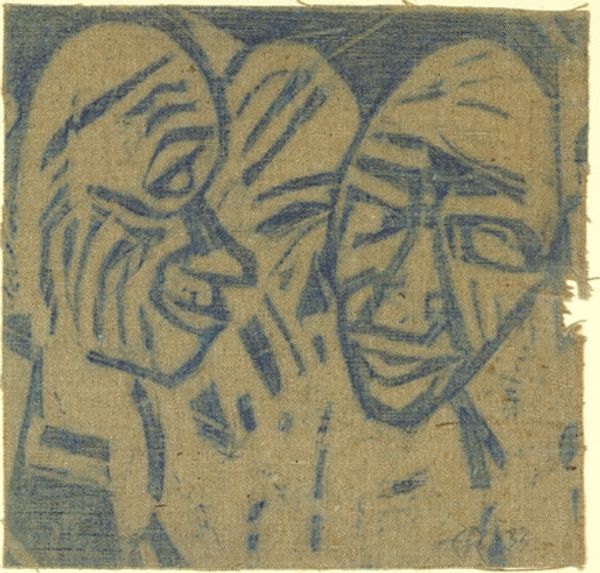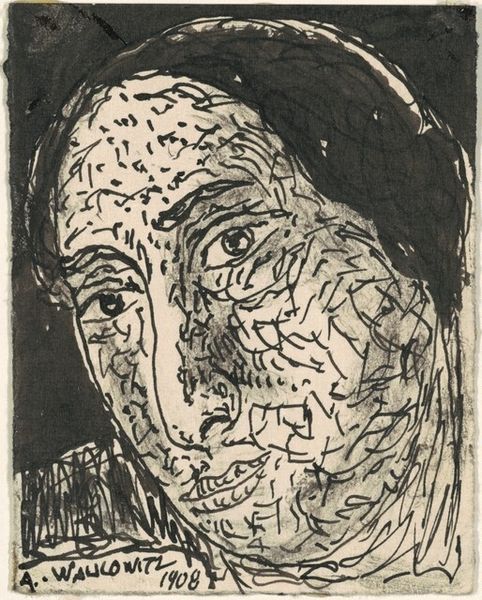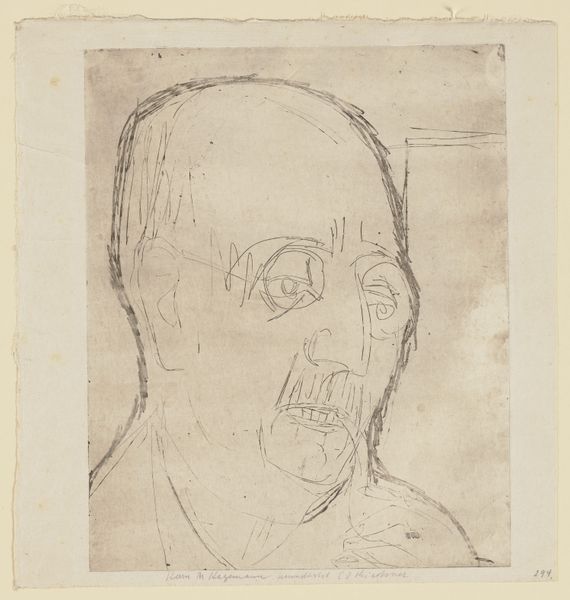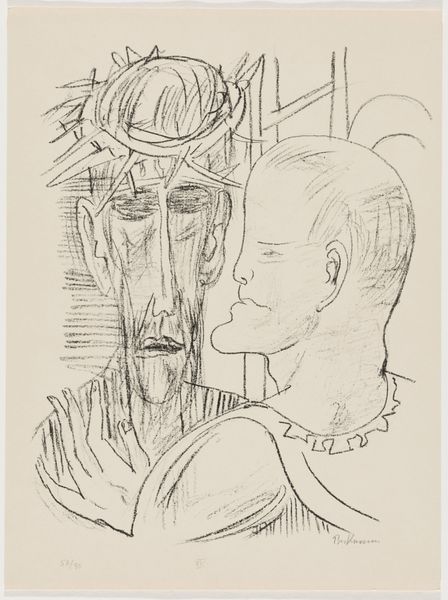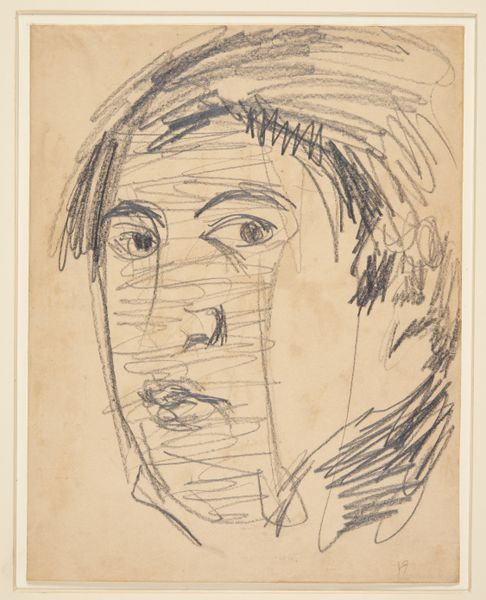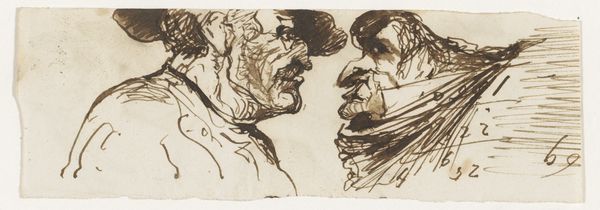
drawing, charcoal
#
portrait
#
drawing
#
toned paper
#
self-portrait
#
pencil sketch
#
charcoal drawing
#
charcoal art
#
portrait reference
#
pencil drawing
#
animal drawing portrait
#
portrait drawing
#
charcoal
#
portrait art
#
fine art portrait
#
realism
Dimensions: height 304 mm, width 355 mm
Copyright: Rijks Museum: Open Domain
Editor: So this drawing, "Portret van Libbe en Dick Ket," was done around 1939 by Dick Ket, using charcoal. It's housed at the Rijksmuseum. It has a pretty stark feeling, perhaps because of the direct gaze of the artist on the right and the unfinished feel of the other portrait. What stands out to you as you look at this double portrait? Curator: This work strikes me as incredibly poignant when considered within the socio-political context of its time. Ket was working in a period marked by increasing anxieties around identity, health, and social belonging, especially as war loomed. Given his physical isolation due to heart disease, one wonders if Ket consciously places himself within the larger frame of societal unease and even mortality by including his father, Libbe, in this unfinished rendering. How does this resonate with you? Editor: I see your point. The contrast between the sharply defined self-portrait and the more faded image of his father might be symbolic. Could this imply the shifting roles of tradition and identity during a turbulent period? The way institutions were transforming, the old order fading… Curator: Precisely. Moreover, we should consider the choice of charcoal as a medium. It allows for both meticulous detail and ethereal fading. Think about how the act of portraying oneself with such unflinching clarity while simultaneously depicting his father in a state of almost vanishing challenges conventional notions of portraiture and generational continuity. Could it reflect changing family dynamics influenced by rapid industrial and social change? Editor: That's fascinating! I hadn't considered the material contributing to the overall meaning so explicitly. So, the socio-political influences everything: from Ket’s perspective to the very materials he selected! Curator: Absolutely. The public role of art becomes undeniable in such works, where personal and collective anxieties intertwine. Examining such art invites discourse on these deeper, historically rooted meanings and their continuing relevance to audiences today. Editor: Thanks, that's given me a lot to consider about the image. Curator: A pleasure. Remember art isn't simply aesthetic; it mirrors and molds social perception.
Comments
No comments
Be the first to comment and join the conversation on the ultimate creative platform.
